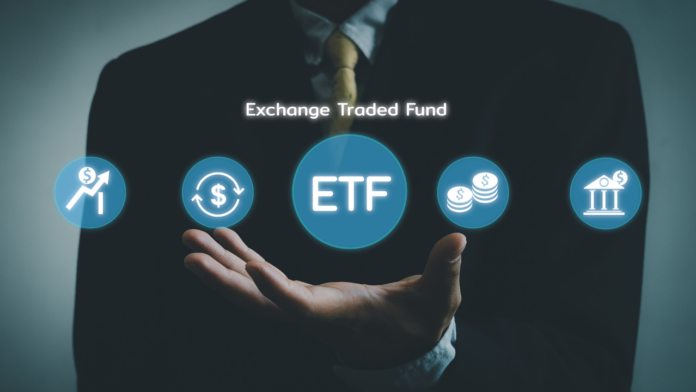Maria Irene
Exchange-traded funds (ETFs) have become increasingly popular among investors since their introduction in the 1990s. ETFs are investment funds that trade on stock exchanges like individual stocks, and they provide investors with a cost-effective way to gain exposure to various asset classes and market sectors. In this article, we’ll take a closer look at what an ETF is and provide a brief history of ETFs around the globe, including some examples of successful and unsuccessful ETFs.
What is an ETF?
An ETF is a type of investment fund that pools money from multiple investors to purchase a basket of securities, such as stocks, bonds, or commodities. ETFs are designed to track the performance of a specific market index, like the S&P 500, or a specific sector, like technology or energy. By investing in an ETF, an investor can gain exposure to a diverse range of assets with a single trade. ETFs typically have lower expense ratios than mutual funds, making them an attractive option for cost-conscious investors.
ETFs trade on stock exchanges throughout the day, which means that their prices fluctuate in real-time based on supply and demand. Unlike mutual funds, which are priced at the end of the trading day, investors can buy and sell ETFs at any time during market hours.
History of ETFs
ETFs were first introduced in the United States in 1993 with the launch of the SPDR S&P 500 ETF, which tracks the performance of the S&P 500 index. Since then, the ETF market has grown rapidly, with more than 8,000 ETFs now available globally, representing over $6 trillion in assets under management.
The growth of ETFs has been fueled by several factors, including the increased availability of low-cost trading platforms, the rise of passive investing, and the expansion of ETF offerings into new asset classes and sectors.
One of the key benefits of ETFs is their ability to provide investors with exposure to markets and asset classes that were previously difficult or expensive to access. For example, investors can now invest in international markets, alternative assets like gold and cryptocurrencies, and even specific sectors like cannabis or clean energy.
Successful ETFs
One of the most successful ETFs of all time is the SPDR S&P 500 ETF (SPY), which was the first ETF to be launched in the United States. With over $500 billion in assets under management, the SPY is the largest ETF in the world and one of the most actively traded securities on the market.
Other successful ETFs include the iShares Core S&P 500 ETF (IVV), which also tracks the S&P 500 index and has over $300 billion in assets under management, and the Vanguard Total Stock Market ETF (VTI), which provides investors with exposure to the entire U.S. stock market and has over $200 billion in assets under management.
Unsuccessful ETFs
While the ETF market has seen tremendous growth in recent years, not all ETFs have been successful. One example of an unsuccessful ETF is the iPath S&P 500 VIX Short-Term Futures ETN (VXX), which was designed to track the volatility index (VIX). The VXX was introduced in 2009 and quickly became popular among traders looking to profit from market volatility. However, the VXX lost more than 99% of its value over the course of a decade, leading many investors to lose significant amounts of money.
Another unsuccessful ETF was the United States Oil Fund (USO), which was designed to track the price of crude oil. The USO became popular during the oil price slump of 2015-2016, but it ultimately failed to deliver on its promise of providing investors with exposure to the oil market. The fund’s value declined sharply, and it was forced to make a reverse stock split to avoid being delisted from the New York Stock Exchange.
Lessons learned
The success and failure of ETFs have taught investors several valuable lessons. One of the most important lessons is the importance of understanding the underlying assets that an ETF is designed to track. Not all ETFs are created equal, and some may be riskier or more volatile than others.
Another lesson is the importance of diversification. ETFs are designed to provide investors with exposure to a diverse range of assets, but it’s important to remember that diversification does not guarantee a profit or protect against losses. It’s also important to consider the cost of investing in ETFs, as some funds may have higher fees than others.
Finally, investors should remember that past performance is not a guarantee of future results. While some ETFs may have a strong track record of performance, there are no guarantees that they will continue to perform well in the future. Investors should always conduct their due diligence and consider their own investment objectives and risk tolerance before investing in any ETF.
ETFs have become an increasingly popular investment vehicle for investors looking for exposure to a diverse range of assets and sectors. With their low costs, ease of trading, and ability to track specific market indexes and sectors, ETFs have something to offer investors of all types.
However, not all ETFs are created equal, and investors should take the time to understand the underlying assets and risks associated with each fund before investing. By doing their due diligence and diversifying their investments, investors can use ETFs to build a well-rounded portfolio that meets their individual investment objectives and risk tolerance.


